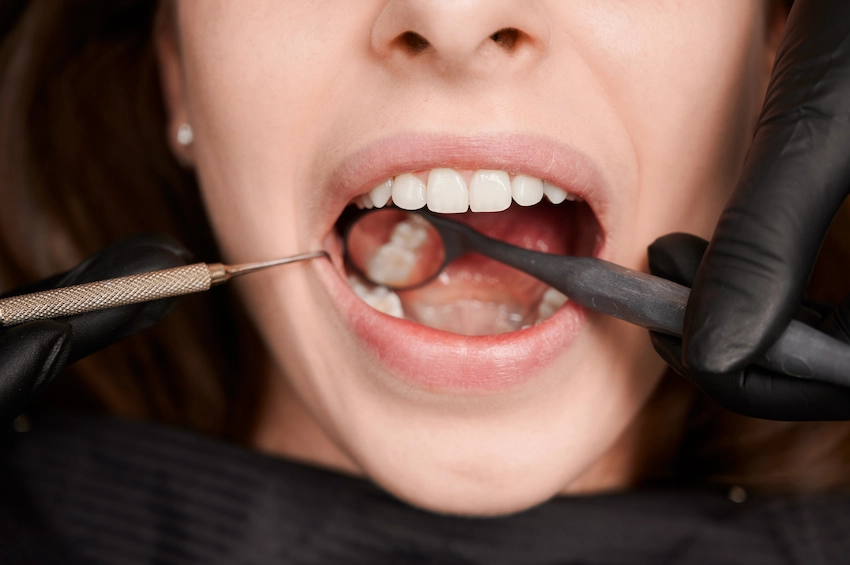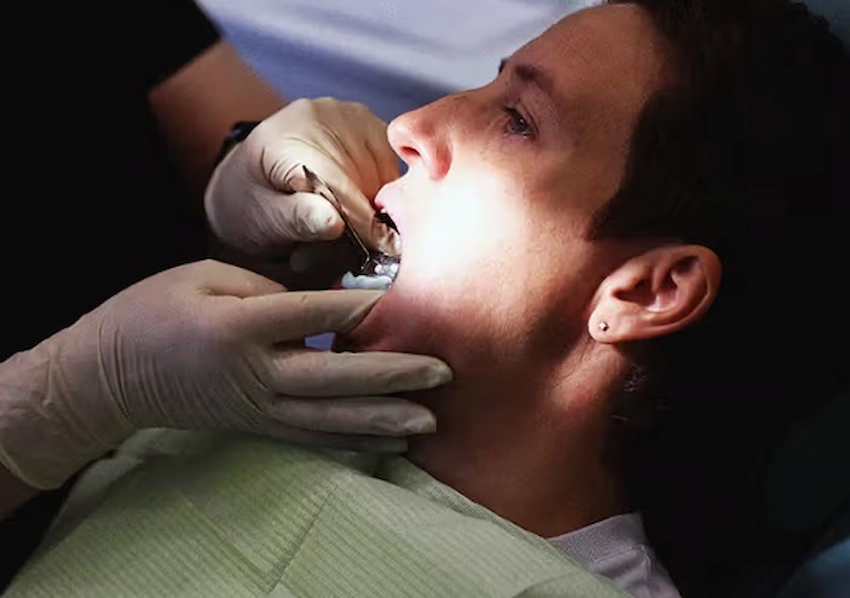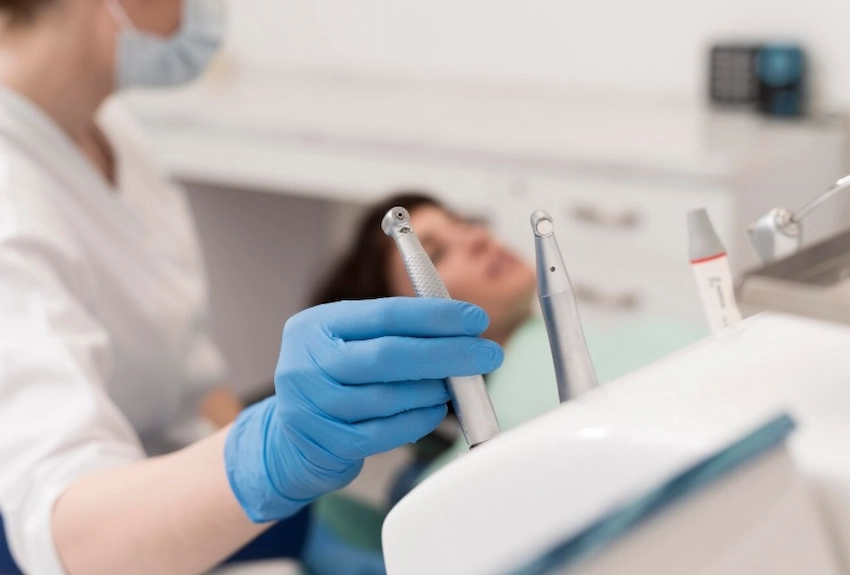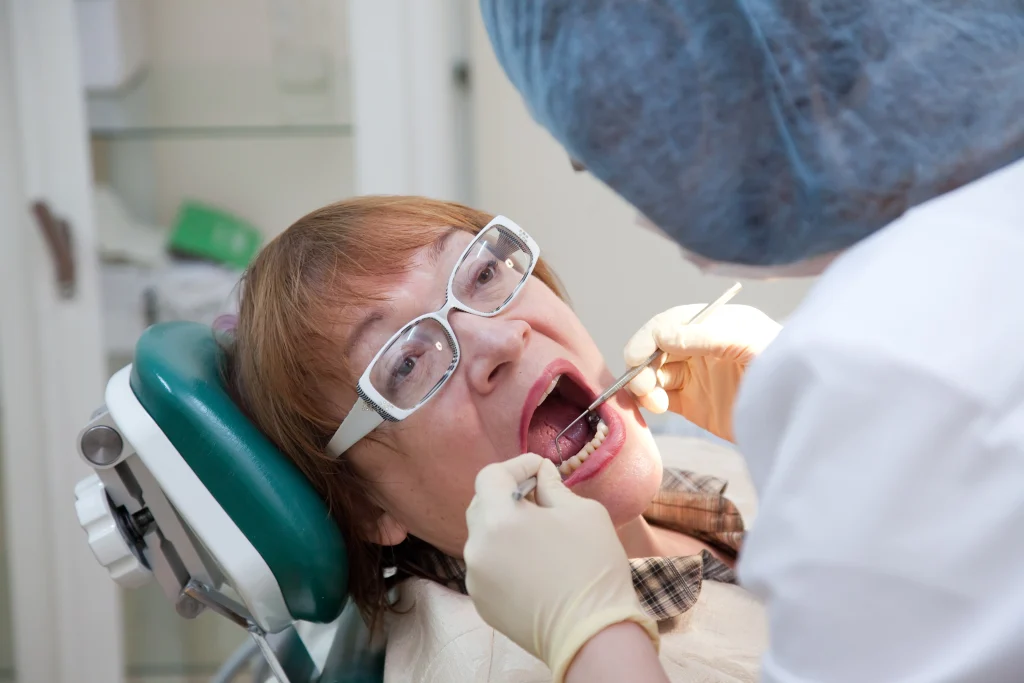🦷Blood Clot Dislodged After Tooth Extraction – What to Do?

When a blood clot forms in the area of a tooth extraction, it is one of the most crucial although overlooked aspects of healing after the extraction. This natural clot functions as a barrier for the exposed bone and nerve endings and creates an environment needed by the gums to heal while at the same time significantly reducing the risk of tightly-woven but sometimes very painful complications.
However, what will happen if such an important biological entity parking at such a crucial place is displaced or dislodged way too early? If you have had a tooth extracted and have a feeling that the clot might have dislodged some time even before it was supposed to, you might have a condition known as dry socket, which can arise immediately after the extraction. This condition can be unbearable.
Therefore, it is imperative to act promptly. In this informative and well-researched blog post, we will present comprehensive yet easy to understand coverage of what to keep an eye out for, how to know if you might have dry socket, what the next steps should be, and what measures to implement in terms of prevention so that such a distressing situation does not happen to you in the future.
Why Is the Blood Clot So Important After a Tooth Extraction?
The moment a tooth has been extracted from its unavoidable space in the mouth, the body will immediately spring into action to eliminate the bleeding that may have occurred during the process, if any existed, and actively facilitate the healing process through the creation of a natural blood clot that acts as a foundation for restoring the normal state of the mouth.
It operates to completely protect, on an internal level, the tissues put in at the site, specifically the bone and nerve, stops or significantly limits any bleeding that may occur during healing, and is also a base for the growth of new tissues, which, apart from being an essential part of the healing process, plays an explanatory role as to how the process is executed at an internal level.
Likewise, a clot only temporarily shields the internal structures of the mouth from substances in the external environment like air, food, and pathogenic microorganisms, which are all likely to mingle with those exposed tissues. Exposure, in this case, could lead to unbearable pain or even worse expose the area to a risk of infection. This should be noted especially regarding the untreated pain that loosely wrapped nerves feel after being subjected to insult; the chances are that pain would come that way, and the affected area becomes dangerous when it gets infected.
What Happens If the Blood Clot Comes Out?
In cases where the blood clot remains intact and is able to stay close to the wound, it will work efficiently as it is in its natural situation and, therefore, does not jeopardize the healing process. Conversely, if the blood clot however remains perturbed such as to get dislodged or dissolves during any period it is not expected to, then such an agitation may result in an increasingly unpleasant complication of a particular concern, alveolar osteitis or known dry socket.
This condition usually appears at around two weeks after the extraction in patients who show specific signs or symptoms such as an intense and awful pain in the area of the surgical site, a shortage of a blood clot covering the bone surface in the extraction socket, a peculiar bad taste in the mouth or a foul smell coming from that part of the mouth or both things, and an aspect of the bone that is so visible that it makes one uncomfortable.
In fact, dry socket is not just a painful inconvenience but indeed one complication that is looked down upon by dental practitioners. Therefore, it would always be necessary to inform the doctor
Utilizing a straw is still one of the common methods people use to suck out the blood clot; suction is applied through the straw. Another bad habit that may dislodge the blood clot is smoking or vaping, as the nicotine and other harmful chemicals present in these products cause blood vessels to constrict and blood flow to reduce.
Signs That the Blood Clot Has been Dislodged

Knowing whether the blood clot has dislodged is not always immediate; the symptoms of this phenomenon can appear to be ambiguous to pinpoint in the first stages. Notwithstanding these uncertainties, keep an eye out for specific warning signs reminiscent of a missing clot followed by the appearance of a dry socket. The dreadful condition has started developing.
Intense, Rhythmic Pain 2-5 Days After Extraction
This pain frequently extends to the affected ear, jaw, or neck on that side of the jaw where the tooth was extracted and becomes more severe with time. Unfortunately, the range of motion of the area generally is very reactive and may therefore be very extreme. If an individual appears to be in a lot of pain, they would not have any other remarkable symptoms of alleviation.
Glaring Empty Socket
retaking a glance at oneself in the mirror and realizing a nauseating white hole in the tender gums instead of a dark, red lively clot means that you have a missing clot. It is definitely interesting to know that even when the doctors are perfect, the structure is visible even when the surgery is done in a good way. If you realize that this is the case, the area around the removed tooth is likely a cause for concern.
Unpleasant Breath or Bad Taste
Perhaps the discovery of the unpleasant smell of the breath of a master of physical disorders or the bitter taste left behind from the inside of the mouth is a clear indicator of presence, opening up even more possibilities, and putting the remaining blood clot at the mouth of the withering region to death. It still should be a circumstance that a person might require the necessary treatment or confirm that the area is in good condition before the use of the mustard seeds clears up.
Swelling that Gets Worse Instead of Better
Usually it is pretty normal for there to be some swelling after extraction but further swelling which appears after this third day is clinically not in a good condition and attracts attention since something seems to be wrong. Instead of lessening, growth should heal around the removed tooth area if it occurs on the contrary; then, for the most part, this should be a strong ground for the applicant to attend the creation of a dentist for further diagnosis and treatment.
What to Do If the Blood Clot Is Dislodged
If you think your blood clot has disappeared, hurry up and take these measures to increase the likelihood of healing appropriately, at least that is not to be mentioned as horrid as with the treatment of a dry socket:
1. Contact Your Dentist or Oral Surgeon
The first point in this situation, as it would be in the case of a serious medical situation, is to notify your dental surgeon immediately upon suspecting that you have a dry socket. Either to perform a thorough examination of the area and ascertain if the dislodged blood has actually led to the formation of a dry socket. The blood clot might have dislodged and the chances of greater dental problem formation are always unavoidable if an individual does not seek immediate attention. The dentist
3. Adhere to the Proper Dosages When Using Pain Killers
Over the Counter NSAIDs such as Ibuprofen are Non-Prescription Medicines that help reduce scars and relieve pain while waiting for medical intervention because they have anti-inflammatory, analgesic, and fever-reducing effects, as well as a low side effect profile and the possibility of causing irritation and ulcers in the stomach. Thus, it is important to follow the dentist.
How to Prevent Blood Clot Dislodgement in the First Place

If you are concerned about blood clots, let’s face it that one of the best ways of handling clots is through prevention to begin with as the first and foremost point of this article’s ethical concern and the highly series of things to note is to observe they should steadily maintain optimum conditions regarding the healing of their areas. Thus, here you can find a list of do’s and don’ts related to improving your health instantly after the extraction:
- It is important to note that the use of tobacco and its products could have serious long-term effects on the body. Within 3 days postoperation and up to a week after the dental operation, it is strongly recommended not to smoke.
- Additionally, it is important to note that the risks of further complications would be increased due to negative factors and irritants. It is mandatory to ditch drinking straws and the act of sipping would not know how difficult it is in the first time after any surgical operation. Thus, inactivity should persist for a period of 5 days after the surgery.
- For the following 24 hours you should not rinse your mouth in order to allow stable formation and tight fixation of the clot the dentist has created for you. Rinsing would result in dislodging and shifting of the clot jeopardizing healing possibilities.
Forthcoming, the first one for you would be to apply pressure to spit, cough, and sneeze vigorously and it may lead to huge dislodgment and full loss of the blood clot queue in the month.When a blood clot forms in the area of a tooth extraction, it is one of the most crucial although overlooked aspects of healing after the extraction. This natural clot functions as a barrier for the exposed bone and nerve endings and creates an environment needed by the gums to heal while at the same time significantly reducing the risk of tightly-woven but sometimes very painful complications.
However, what will happen if such an important biological entity parking at such a crucial place is displaced or dislodged way too early?
If you have had a tooth extracted and have a feeling that the clot might have dislodged some time even before it was supposed to, you might have a condition known as dry socket, which can arise immediately after the extraction. This condition can be unbearable.
Therefore, it is imperative to act promptly. In this informative and well-researched blog post, we will present comprehensive yet easy to understand coverage of what to keep an eye out for, how to know if you might have dry socket, what the next steps should be, and what measures to implement in terms of prevention so that such a distressing situation does not happen to you in the future.
Why Is the Blood Clot So Important After a Tooth Extraction?
The moment a tooth has been extracted from its unavoidable space in the mouth, the body will immediately spring into action to eliminate the bleeding that may have occurred during the process, if any existed, and actively facilitate the healing process through the creation of a natural blood clot that acts as a foundation for restoring the normal state of the mouth.
It operates to completely protect, on an internal level, the tissues put in at the site, specifically the bone and nerve, stops or significantly limits any bleeding that may occur during healing, and is also a base for the growth of new tissues, which, apart from being an essential part of the healing process, plays an explanatory role as to how the process is executed at an internal level.
Likewise, a clot only temporarily shields the internal structures of the mouth from substances in the external environment like air, food, and pathogenic microorganisms, which are all likely to mingle with those exposed tissues. Exposure, in this case, could lead to unbearable pain or even worse expose the area to a risk of infection. This should be noted especially regarding the untreated pain that loosely wrapped nerves feel after being subjected to insult; the chances are that pain would come that way, and the affected area becomes dangerous when it gets infected.
What Happens If the Blood Clot Comes Out?
In cases where the blood clot remains intact and is able to stay close to the wound, it will work efficiently as it is in its natural situation and, therefore, does not jeopardize the healing process. Conversely, if the blood clot however remains perturbed such as to get dislodged or dissolves during any period it is not expected to, then such an agitation may result in an increasingly unpleasant complication of a particular concern, alveolar osteitis or known dry socket.
This condition usually appears at around two weeks after the extraction in patients who show specific signs or symptoms such as an intense and awful pain in the area of the surgical site, a shortage of a blood clot covering the bone surface in the extraction socket, a peculiar bad taste in the mouth or a foul smell coming from that part of the mouth or both things, and an aspect of the bone that is so visible that it makes one uncomfortable.
In fact, dry socket is not just a painful inconvenience but indeed one complication that is looked down upon by dental practitioners. Therefore, it would always be necessary to inform the doctor
Utilizing a straw is still one of the common methods people use to suck out the blood clot; suction is applied through the straw. Another bad habit that may dislodge the blood clot is smoking or vaping, as the nicotine and other harmful chemicals present in these products cause blood vessels to constrict and blood flow to reduce.
Signs That the Blood Clot Has been Dislodged
Knowing whether the blood clot has dislodged is not always immediate; the symptoms of this phenomenon can appear to be ambiguous to pinpoint in the first stages. Notwithstanding these uncertainties, keep an eye out for specific warning signs reminiscent of a missing clot followed by the appearance of a dry socket. The dreadful condition has started developing.
1. Intense, Rhythmic Pain 2-5 Days After Extraction
This pain frequently extends to the affected ear, jaw, or neck on that side of the jaw where the tooth was extracted and becomes more severe with time. Unfortunately, the range of motion of the area generally is very reactive and may therefore be very extreme. If an individual appears to be in a lot of pain, they would not have any other remarkable symptoms of alleviation.
2. Glaring Empty Socket
retaking a glance at oneself in the mirror and realizing a nauseating white hole in the tender gums instead of a dark, red lively clot means that you have a missing clot. It is definitely interesting to know that even when the doctors are perfect, the structure is visible even when the surgery is done in a good way. If you realize that this is the case, the area around the removed tooth is likely a cause for concern.
3. Unpleasant Breath or Bad Taste
Perhaps the discovery of the unpleasant smell of the breath of a master of physical disorders or the bitter taste left behind from the inside of the mouth is a clear indicator of presence, opening up even more possibilities, and putting the remaining blood clot at the mouth of the withering region to death. It still should be a circumstance that a person might require the necessary treatment or confirm that the area is in good condition before the use of the mustard seeds clears up.
4. Swelling that Gets Worse Instead of Better
Usually it is pretty normal for there to be some swelling after extraction but further swelling which appears after this third day is clinically not in a good condition and attracts attention since something seems to be wrong. Instead of lessening, growth should heal around the removed tooth area if it occurs on the contrary; then, for the most part, this should be a strong ground for the applicant to attend the creation of a dentist for further diagnosis and treatment.
What to Do If the Blood Clot Is Dislodged

If you think your blood clot has disappeared, hurry up and take these measures to increase the likelihood of healing appropriately, at least that is not to be mentioned as horrid as with the treatment of a dry socket:
Contact Your Dentist or Oral Surgeon
The first point in this situation, as it would be in the case of a serious medical situation, is to notify your dental surgeon immediately upon suspecting that you have a dry socket. Either to perform a thorough examination of the area and ascertain if the dislodged blood has actually led to the formation of a dry socket. The blood clot might have dislodged and the chances of greater dental problem formation are always unavoidable if an individual does not seek immediate attention. The dentist
Adhere to the Proper Dosages When Using Pain Killers
Over the Counter NSAIDs such as Ibuprofen are Non-Prescription Medicines that help reduce scars and relieve pain while waiting for medical intervention because they have anti-inflammatory, analgesic, and fever-reducing effects, as well as a low side effect profile and the possibility of causing irritation and ulcers in the stomach. Thus, it is important to follow the dentist.
How to Prevent Blood Clot Dislodgement in the First Place
If you are concerned about blood clots, let’s face it that one of the best ways of handling clots is through prevention to begin with as the first and foremost point of this article’s ethical concern and the highly series of things to note is to observe they should steadily maintain optimum conditions regarding the healing of their areas. Thus, here you can find a list of do’s and don’ts related to improving your health instantly after the extraction:
- It is important to note that the use of tobacco and its products could have serious long-term effects on the body. Within 3 days postoperation and up to a week after the dental operation, it is strongly recommended not to smoke.
- Additionally, it is important to note that the risks of further complications would be increased due to negative factors and irritants. It is mandatory to ditch drinking straws and the act of sipping would not know how difficult it is in the first time after any surgical operation. Thus, inactivity should persist for a period of 5 days after the surgery.
- For the following 24 hours you should not rinse your mouth in order to allow stable formation and tight fixation of the clot the dentist has created for you. Rinsing would result in dislodging and shifting of the clot jeopardizing healing possibilities.
Forthcoming, the first one for you would be to apply pressure to spit, cough, and sneeze vigorously and it may lead to huge dislodgment and full loss of the blood clot queue in the month.
Frequently Asked Questions About Dislodged Blood Clots After Tooth Extraction
If you see a visible hole or exposed bone where the tooth was removed and feel sharp, throbbing pain a few days post-surgery, the clot may have dislodged. Bad breath or a foul taste can also be signs of a missing clot.
In rare mild cases, your body may form a new clot, but usually, a dislodged clot leads to dry socket, which needs dental treatment. Visit your dentist promptly to avoid infection and ease the pain.
Dry socket causes deep, radiating pain that may spread to your ear or jaw. It’s usually more severe than typical post-extraction discomfort.
Avoid smoking, drinking through straws, or vigorous rinsing for at least 48 hours. Stick to soft foods and follow your dentist’s aftercare instructions carefully.
Your dentist will clean the socket and apply a medicated dressing to soothe pain and promote healing. Pain relievers and special rinses may also be recommended.




